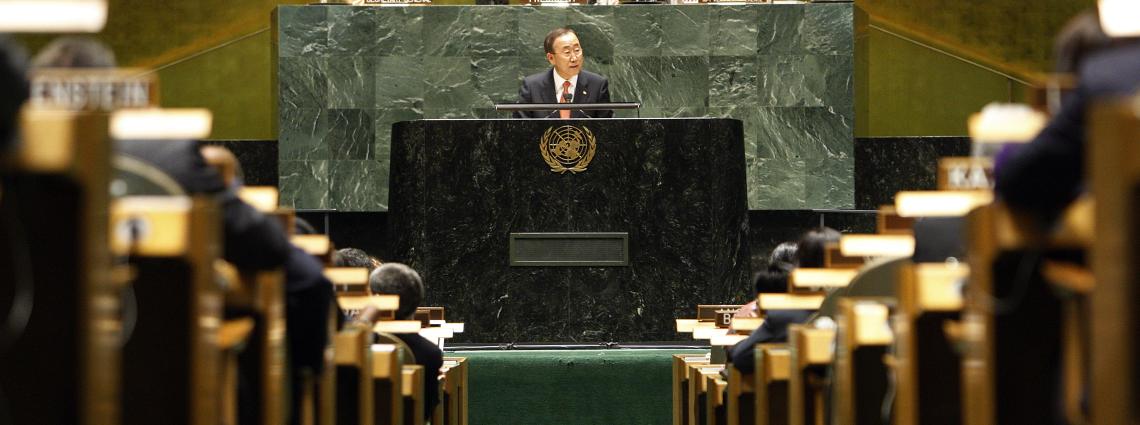Non-proliferation and disarmament conference reaches consensus
“Entry into force of the CTBT would be a major step forward for disarmament,” Stephen Smith, Australia’s Minister of Foreign Affairs, outlined his country’s position. More than 20 delegations underscored the key role of the Treaty in this respect. The CTBT provides, among others, a firm legal barrier against testing, a strong global and regional confidence and security building measure, and an essential element for deeper nuclear arms reductions. Talking about the Middle East, Tóth noted that the “CTBT ratifications carries no political cost while the positive spillover effects can increase mutual trust and significantly enhance stability.” Valentin Rybakov, the Assistant to the President of Belarus, said that “one of the most important prerequisites for progress in the disarmament track is the early entry into force of the CTBT.”

The 2010 NPT Review Conference reached consensus and adopted a final document.
“We strongly believe that the CTBT is essential to avoid the development of nuclear weapons,” said Máximo Medina Morel, the Director of Nuclear Issues at the National Commission of Energy of the Dominican Republic, emphasizing the non-proliferation role of the Treaty. Designed, for example, as a last barrier on the road to nuclear weapons, the CTBT provides the final “downstream” proof of one state’s intentions. No less than 20 countries mentioned the Treaty’s non-proliferation benefits in their prepared statements to the Conference.
Only five years ago, merely 95 countries spoke at the beginning of a Review Conference that was ultimately widely considered to have failed in its attempt to advance the disarmament and non-proliferation regime. In the 2010 final document, adopted by consensus, States undertook to ratify the CTBT with all expediency, were committed to continuing the moratoria on nuclear explosions, and pledged to promote the Treaty at national, regional and global levels.
In the general debate, more than 50 countries underlined the importance of the Treaty’s entry into force and over 20 urged the remaining outliers to ratify – both about double the number from 2005. “I would like to thank all delegations that have expressed their support for the CTBT in the statements during the past few days,” said Tibor Tóth at the close of the first week of the Conference. “It is now time for each and every country to act on the commitments made: it is time to bring the CTBT in force,” he concluded upon the successful outcome of the 2010 NPT Review Conference.
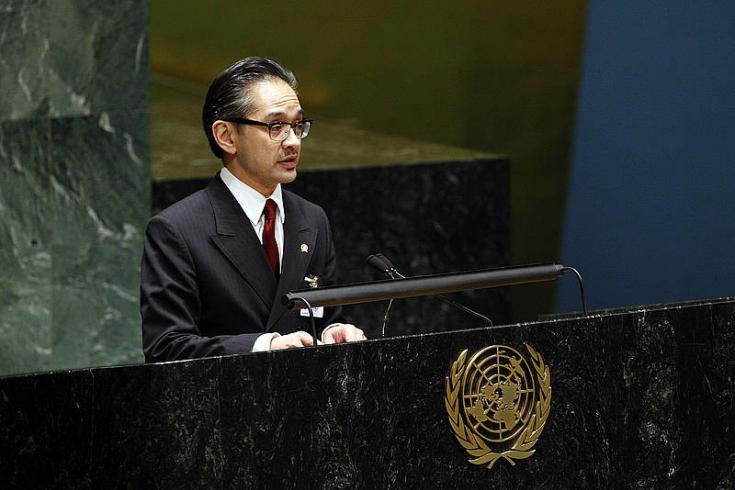
Marty Natalegawa, Indonesia’s Minister of Foreign Affairs.
During the last week of the Conference, against the background of the CTBT exhibition “Putting an end to nuclear explosions”, the Central African Republic and Trinidad and Tobago deposited their instruments of ratification with the United Nations. “I would like to commend [these governments] for this important step that shows not only their commitment, but also the contribution that small countries can bring to advancing the cause of nuclear non-proliferation and disarmament by promoting the entry into force of the CTBT and its universalization,” said Sergio Duarte, the UN High Representative for Disarmament Affairs.
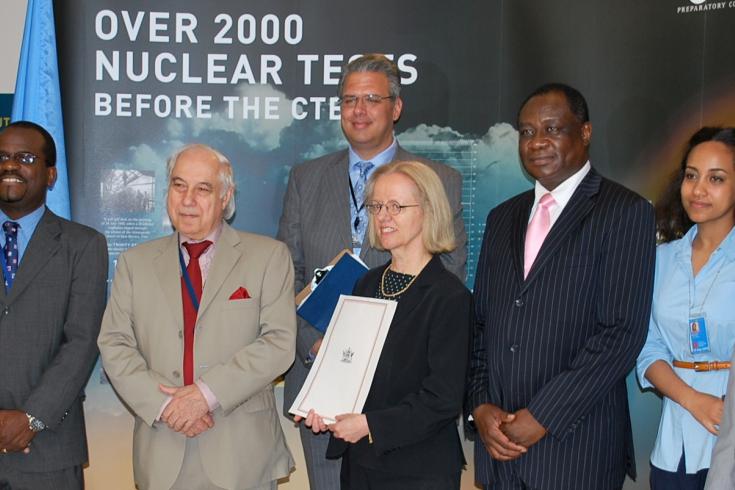
Officials at the treaty depositing event.
Numerous delegations noted the challenges facing the NPT regime on many fronts and the key role of progress at the 2010 Review Conference. “Mr. President, strengthening the international disarmament and non proliferation regime requires, in Italy’s view, additional – but very important – steps. The first is the Comprehensive Test Ban Treaty,” Italy’s Undersecretary of State for Foreign Affairs Vincenzo Scotti told the Conference. More than 40 countries underlined the importance of the CTBT within the NPT regime. The CTBT’s entry into force “may pave the way to solving many of the current and future challenges facing the NPT,” said Tóth. “We believe the CTBT can serve as a key complementary document to the NPT,” Vuk Jeremi?, Serbia’s Minister of Foreign Affairs, told the Review Conference.
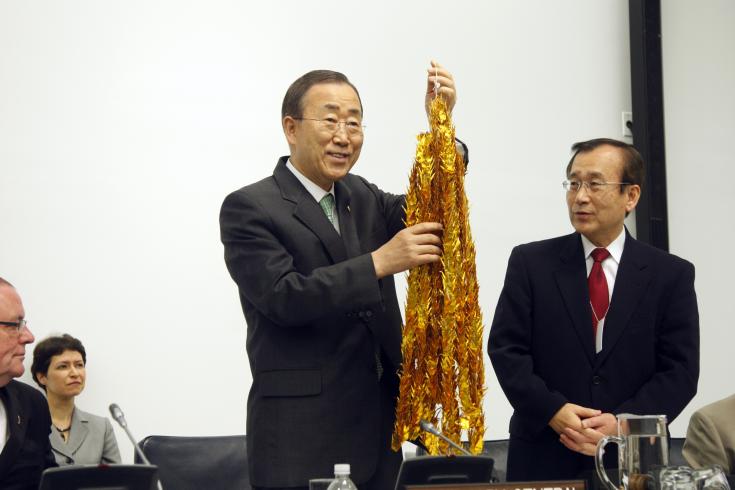
UN Secretary-General receives paper cranes, symbols of hope for a nuclear-free world.
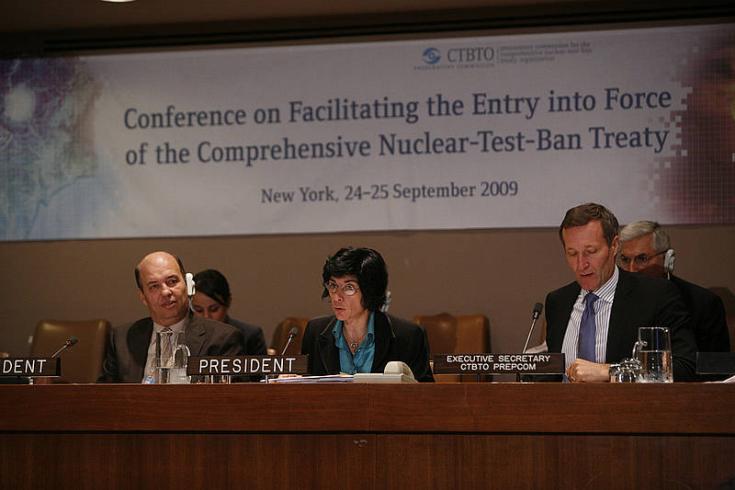
Ambassador Omar Zniber, Ambassador Florence Mangin, and CTBTO ES Tibor Tóth.
2 Jun 2010
